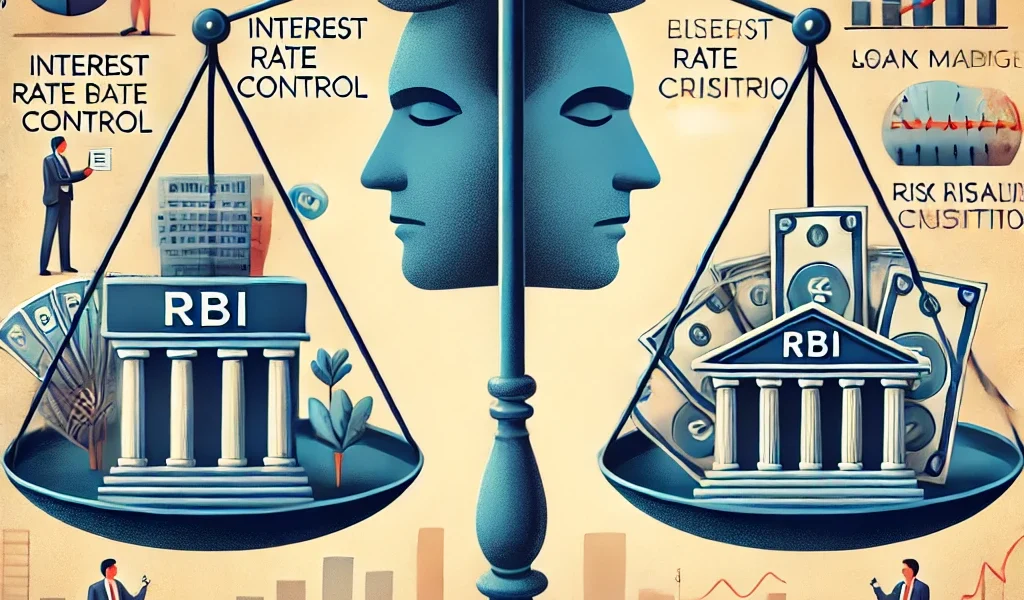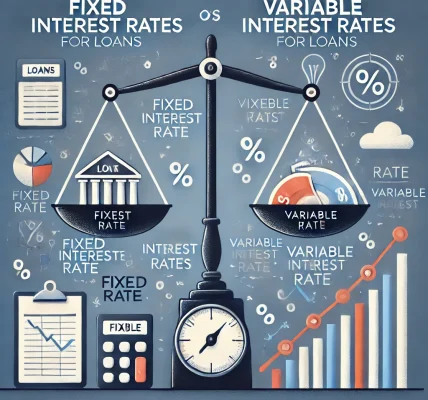Introduction
The Reserve Bank of India (RBI) and other central banks worldwide play a crucial role in shaping financial stability, especially in the lending sector. Their policies and regulations influence loan interest rates, eligibility criteria, lending limits, and overall credit accessibility. Understanding these regulations helps borrowers and lenders navigate the financial system efficiently.
This article explores how RBI and central bank regulations impact loan policies, the key measures implemented, and how these affect borrowers and financial institutions.
1. Role of RBI and Central Banks in Loan Regulation
Central banks, including the RBI, regulate the banking sector to ensure financial stability and economic growth. Their primary functions related to loan policies include:
- Monetary Policy Implementation: Adjusting interest rates to control inflation and liquidity.
- Supervising Banks: Ensuring banks follow fair lending practices.
- Regulating Loan Terms: Setting limits on interest rates, loan tenure, and borrowing capacity.
- Risk Management: Imposing guidelines to prevent excessive lending and reduce defaults.
2. Monetary Policy and Its Impact on Loan Interest Rates
Repo Rate and Reverse Repo Rate
The RBI controls interest rates by adjusting the repo rate (the rate at which banks borrow from RBI) and the reverse repo rate (the rate at which banks deposit their surplus funds with RBI).
- When the repo rate increases, borrowing becomes expensive, leading to higher loan interest rates.
- When the repo rate decreases, borrowing becomes cheaper, leading to lower loan interest rates.
This directly affects the affordability of home loans, personal loans, and business loans.
Cash Reserve Ratio (CRR) and Statutory Liquidity Ratio (SLR)
- CRR: The percentage of total deposits banks must hold in reserves with the RBI.
- SLR: The minimum reserve banks must maintain in government-approved securities.
Higher CRR and SLR reduce the funds available for lending, leading to stricter loan policies and higher interest rates.
3. RBI Regulations on Loan Eligibility and Creditworthiness
Credit Score and Risk-Based Lending
- RBI mandates banks to consider credit scores (like CIBIL scores) before approving loans.
- Borrowers with higher credit scores (750+) get lower interest rates and easier approval.
- Those with lower credit scores may face higher interest rates or loan rejection.
Loan-to-Value (LTV) Ratio
- RBI caps the LTV ratio for secured loans like home loans to 75-90%, requiring borrowers to arrange the rest as a down payment.
- This regulation prevents banks from excessive lending and protects borrowers from over-borrowing.
Debt-to-Income Ratio (DTI) Limitations
- RBI advises banks to consider a borrower’s DTI ratio before approving loans.
- A high DTI ratio (above 40%) indicates excessive debt and increases the risk of loan rejection.
4. Regulatory Measures to Prevent Loan Defaults
Base Rate and MCLR
- RBI introduced the Marginal Cost of Lending Rate (MCLR) to prevent banks from charging excessive interest.
- Loans linked to MCLR have transparent interest rate calculations.
Loan Restructuring Policies
- During financial crises (e.g., COVID-19 pandemic), RBI allows loan moratoriums and restructuring to ease repayment pressure on borrowers.
- Banks must follow RBI guidelines for restructuring loans to ensure fair treatment.
Non-Performing Asset (NPA) Management
- Loans unpaid for 90+ days are classified as NPAs.
- RBI mandates banks to take action on NPAs to reduce bad debt accumulation.
5. Impact of RBI’s Policies on Different Types of Loans
| Loan Type | Impact of RBI Regulations |
|---|---|
| Home Loans | Lower interest rates when repo rates drop, strict LTV ratio limits |
| Personal Loans | Credit score-based approvals, higher interest rates due to risk |
| Business Loans | Affected by CRR, SLR, and economic conditions |
| Agriculture Loans | Often subsidized by RBI to support farmers |
| Education Loans | Encouraged with lower interest rates and repayment flexibility |
6. How Borrowers Can Adapt to Changing Loan Policies
- Monitor Interest Rate Trends: Borrowers should track RBI’s repo rate changes to time their loan applications.
- Improve Credit Scores: Maintaining a 750+ credit score increases loan approval chances.
- Compare Loan Offers: Different banks implement RBI guidelines uniquely; comparing lenders can lead to better terms.
- Opt for Fixed or Floating Rates Wisely: Fixed rates remain constant, while floating rates vary based on RBI policies.
Conclusion
RBI and central banks significantly influence loan policies through interest rate control, risk management, and borrower protection measures. By understanding these regulations, borrowers can make informed financial decisions and take advantage of favorable lending conditions. Keeping track of monetary policy updates and maintaining financial discipline can help individuals secure loans with better terms and conditions.




